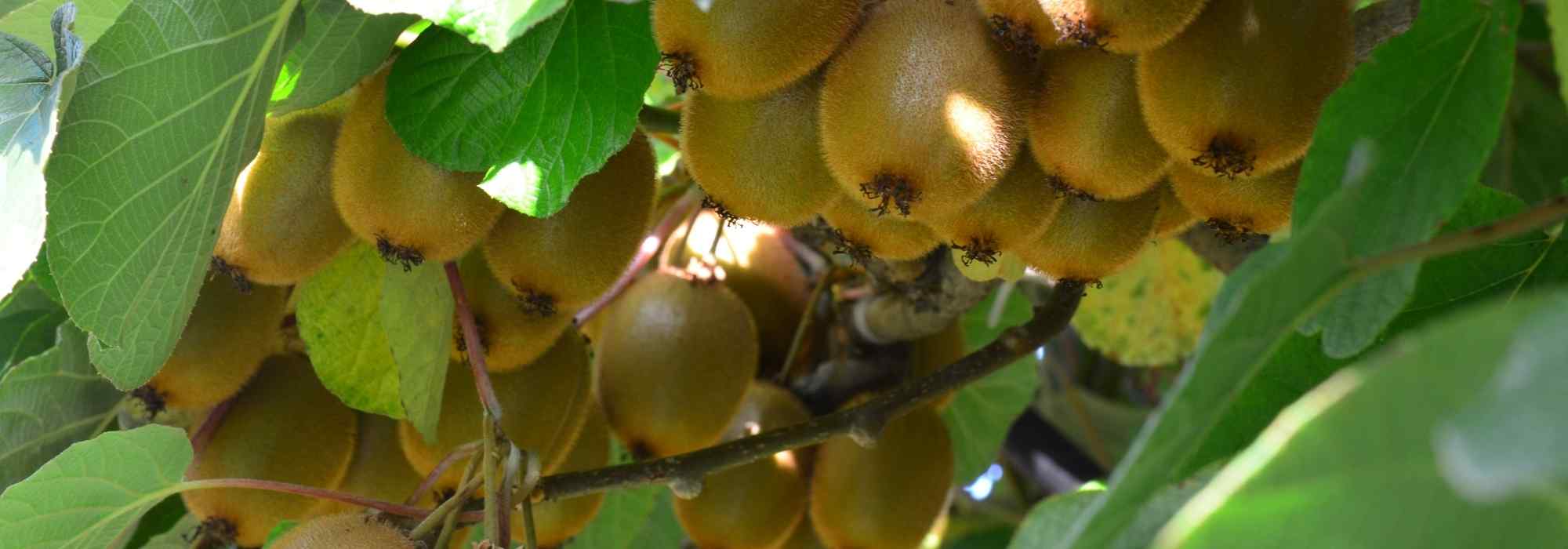
How to differentiate between kiwi and kiwaï?
Two very different species
Contents
Even though Kiwi and Kiwai share many similarities, particularly in terms of growing conditions, they are distinguished by several points. Indeed, Kiwai or Siberian Kiwi, also known as Actinidia arguta, is a climbing plant that is even more vigorous than Kiwi (also called Chinese Gooseberry) and is much hardier. The flowering is slightly different, but it is especially in terms of the fruits that the contrast is most striking. Kiwai produces small fruits with smooth skin that can be eaten whole. In contrast, the large fruit of Actinidia deliciosa or Kiwi has a brown, villous skin. It only offers us its yellow or green flesh. In short, these two botanical cousins are much more different than they appear.
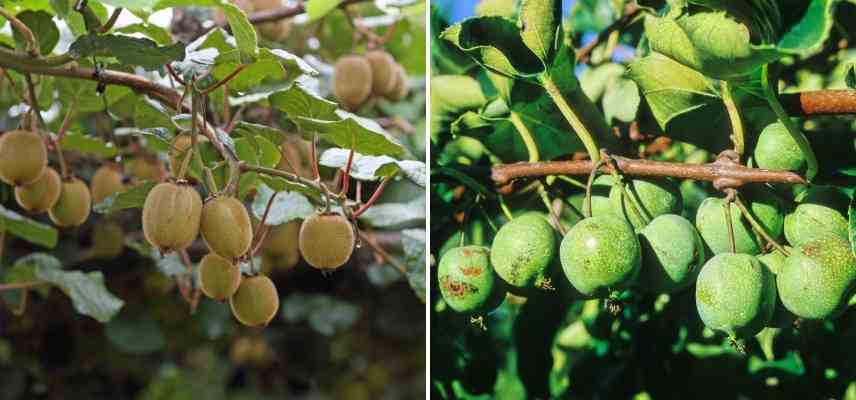
Kiwi on the left and Kiwai on the right
A bit of botany...
The plant commonly known as the Kiwi is called in Latin Actinidia deliciosa. Meanwhile, the Kiwaï is named Actinidia arguta. Most Actinidias are native to China and belong to the family of Actinidiaceae. They are all lianas with voluble stems, abundant foliage, and should be trained on a support. The vast majority are dioecious: to bear fruit, a male plant is needed for several females (which produce the fruits). The term kiwi refers in common language to both the plant and the fruit, as does the term kiwaï.
The Kiwaï is native to China, Japan, Korea, and Siberia, hence its other name of Siberian Kiwi and its great hardiness. The fruiting liana of Kiwaï is also more vigorous than the Kiwi. The large leaves of the Kiwaï measure about 10 cm long. They are deciduous, heart-shaped, but pointed at the tip and finely dentate.
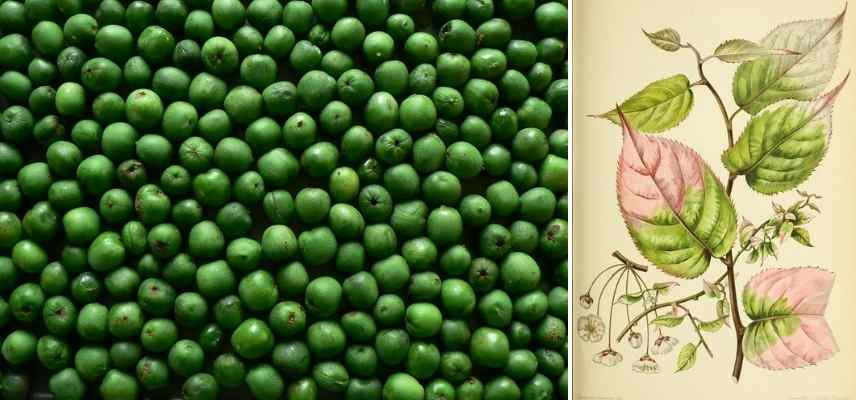
Fruits of the Kiwaï (on the left) and botanical plate of Kiwi kolomita
The foliage of the Kiwi, native to China, is also heart-shaped and deciduous, rather ovate, but sometimes almost circular. The size of the leaves varies between 8 cm and 12 cm long. The young leaves of Kiwi or Chinese Gooseberry have purple hairs all over their surface.
In reality, it is mainly at the level of the flowers and fruits that one can distinguish the Kiwi from the Kiwaï.
Nota bene: there are about thirty species of Actinidias in the world. Actinidia deliciosa and Actinidia arguta are the most well-known. However, one can also encounter Actinidia chinensis with smoother-skinned kiwis (note: the two species A. deliciosa and A. chinensis are now clearly distinct). Or ornamental lianas such as Actinidia kolomikta or Arctic Kiwi or Actinidia pilosula.
How to differentiate between kiwi and kiwaï flowers?
The flowers of Kiwi or Actinidia deliciosa (and Actinidia chinensis)
The plant is dioecious, meaning there are male plants with male flowers and female plants with female flowers. The male flower of the Kiwi has large white petals and a multitude of powdery yellow stamens at its centre. Male flowers measure about 25 mm in diameter and are cream-white in colour. These five-petalled flowers are grouped in cymes of three flowers featuring numerous fertile, very prominent golden and powdery stamens. Female flowers measure 3 to 4 cm in diameter and are yellowish-white in colour. These five-petalled flowers are solitary and axillary (originating in the axil of a leaf). They bear short stamens, equipped with sterile pollen, surrounding white stigmas.
The flowers of Kiwai or Actinidia arguta
The flowering of kiwai is quite similar to that of kiwi, with a few small differences. The white flowers generally have a slight greenish tint. They are smaller than those of Kiwi (about 2 cm in diameter for males and 25 mm for females) and are especially fragrant. Both male and female flowers appear in the axils of the leaves, usually grouped in threes. Male flowers have many stamens but… black ones. Female flowers also display short sterile black stamens surrounding, as with Kiwi, white stigmas.
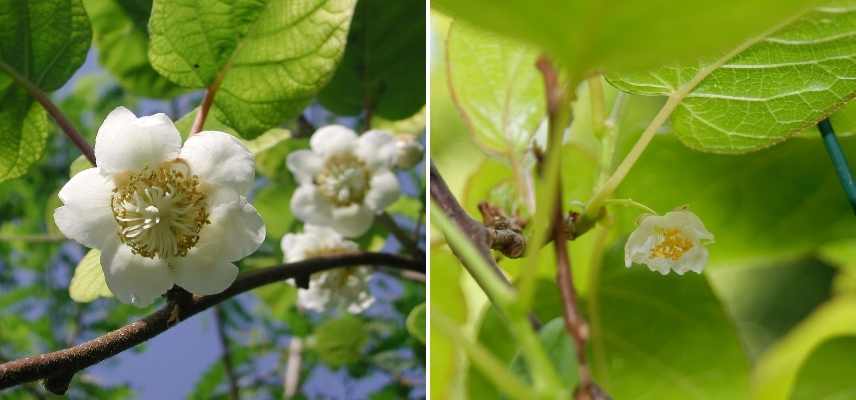
Flowering of Actinidia deliciosa (on the left) and Actinidia arguta (on the right)
Discover other Kiwi bush
View all →Available in 0 sizes
Available in 0 sizes
Available in 0 sizes
Available in 1 sizes
Available in 1 sizes
Available in 1 sizes
Available in 1 sizes
Available in 1 sizes
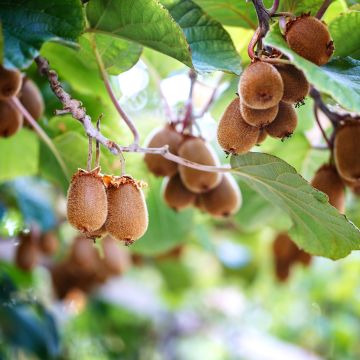
Available in 2 sizes
Available in 2 sizes
How to differentiate between kiwi fruit and kiwaï fruit?
Kiwi or Actinidia deliciosa (and Actinidia chinensis)
This exotic fruit is brown and oval-shaped. Quite large, measuring 5 to 6 cm long, the skin is brown and covered in hair (more glabrous for Actinidia chinensis). The flesh is green to yellow depending on the varieties, sweet and slightly tangy. It is advisable to peel them, as only the tangy flesh is consumed.
Kiwai or Actinidia arguta
The small fruits of Kiwai have a very sweet flavour and are smaller than Kiwi fruit: approximately 25 mm long. The skin is smooth and green, slightly yellowish, but some varieties produce red fruits like Kiwai ‘Ken’s Red’. The vitamin C content is significantly higher than that of Kiwi (400 mg per 100 g), as well as the content of Iron, Calcium, Magnesium, and Potassium. The fruit is consumed whole when the skin becomes soft.
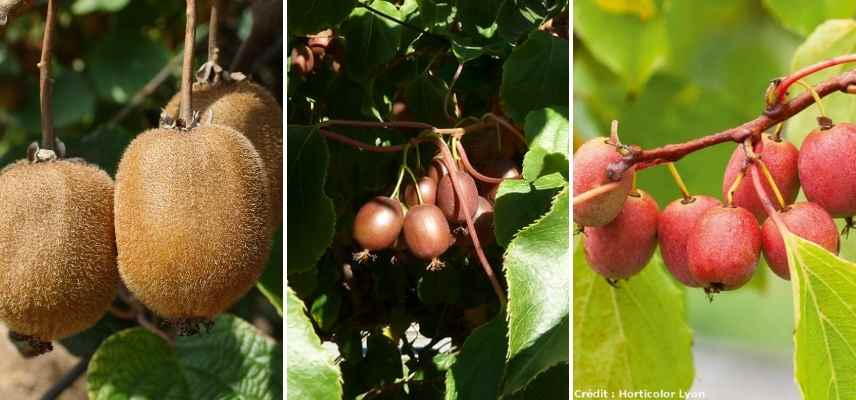
Velvety fruits of Actinidia deliciosa, and the smoother fruits of Actinidia arguta (© Wendy Cutler) and Actinidia arguta Ken’s Red (in the centre and on the right)
And the cultivation of kiwi and kiwaï?
The growing conditions are largely the same for kiwis and kiwaïs.
Both require: a fertile, humus-bearing soil that remains cool but is well-drained and non-calcareous. A warm, sunny exposure, well-sheltered from the wind, is ideal. Remember that these are vigorous lianas that can grow up to 6 m high for Kiwi and 8 m for Kiwaï. A sturdy support for training will therefore be necessary: pergola, taut wires, wire fencing…
It is worth noting that Kiwaï is much hardier than Kiwi, tolerating temperatures down to -25 °C. This allows it to be grown in regions with harsher winter climates. You will be able to harvest clusters of Kiwaï fruit earlier than those of kiwi: late summer to early autumn.
Both species are dioecious, but there are self-fertile varieties (female plant grafted onto a male plant) such as the ‘Jenny’ kiwi variety and parthenocarpic varieties, which can produce fruit without fertilization, such as the ‘Vitikiwi’ kiwai variety or the ‘Issaï’ kiwai variety (however, this type of kiwai will produce much more in the presence of a male plant).
If you desire a large fruit yield, it is best to plant one male for every 5 to 6 female plants. It is important to choose the varieties carefully and check the labels before purchasing. Interestingly, male Kiwi plants (Actinidia deliciosa) can fertilize female Kiwaï plants (Actinidia arguta).
To go further...
→ Follow all of Ingrid’s great tips to grow kiwi.
→ Want to learn more about the Kiwai? It’s right here: The Kiwai, a cute mini-kiwi to munch on.
→ Distinguishing a male kiwi plant from a female one can be tricky. Fortunately, we explain everything here: Male or female kiwi, how to distinguish them?
- Subscribe!
- Contents
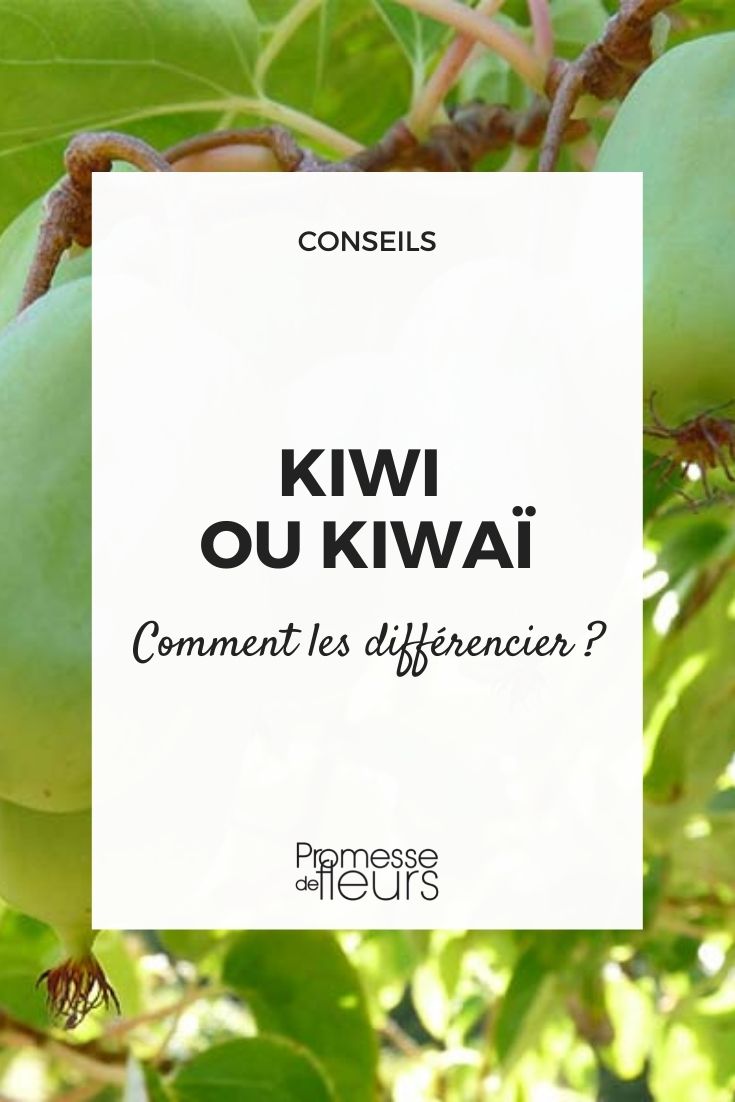































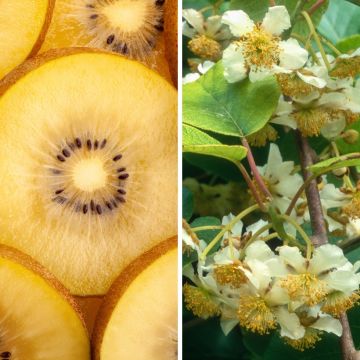
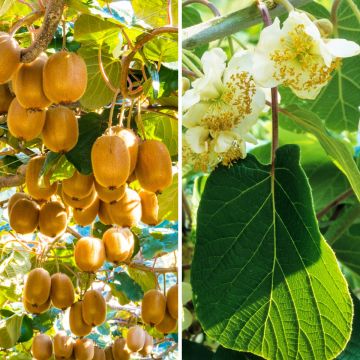
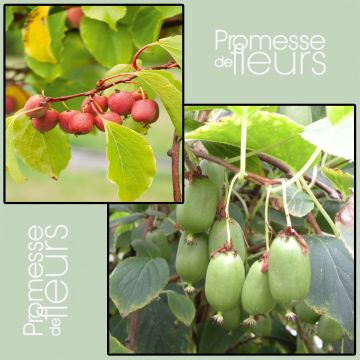
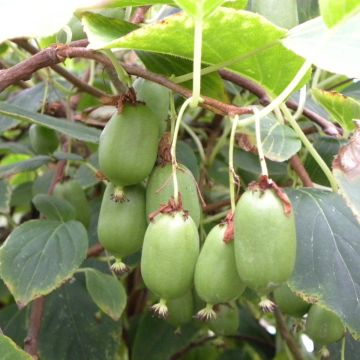
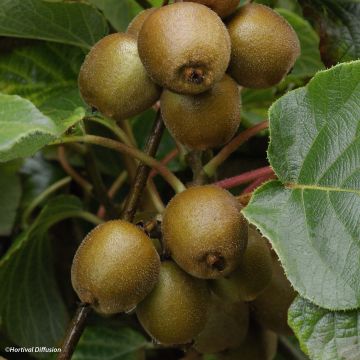
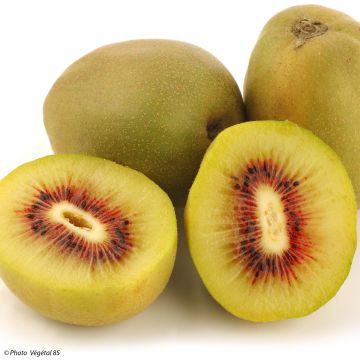
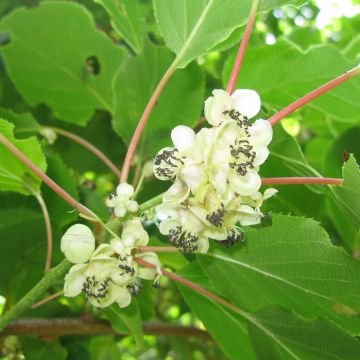
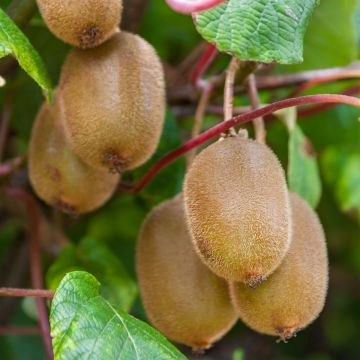
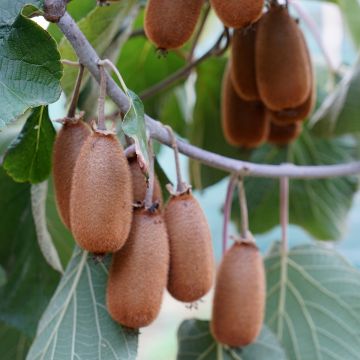
Comments